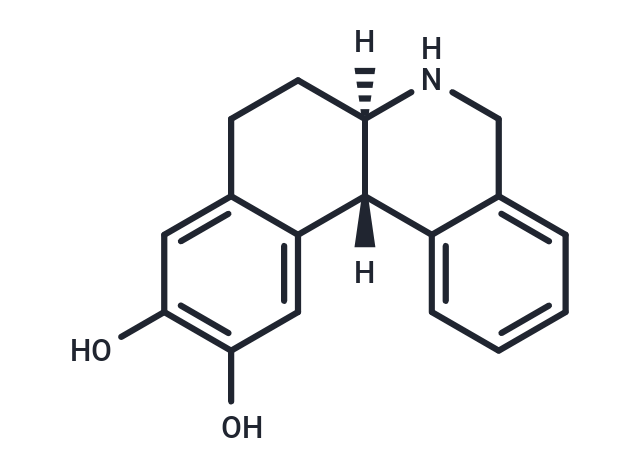Shopping Cart
- Remove All
 Your shopping cart is currently empty
Your shopping cart is currently empty

Dihydrexidine is a full efficacy D1-like dopamine receptor (D1/D5) agonist (IC50: 10 nM for D1 receptor). It also shows potent antiparkinsonian activity.

| Pack Size | Price | Availability | Quantity |
|---|---|---|---|
| 25 mg | $1,970 | 8-10 weeks | |
| 50 mg | $2,580 | 8-10 weeks | |
| 100 mg | $3,400 | 8-10 weeks |
| Description | Dihydrexidine is a full efficacy D1-like dopamine receptor (D1/D5) agonist (IC50: 10 nM for D1 receptor). It also shows potent antiparkinsonian activity. |
| Targets&IC50 | D1 receptor:10 nM, D1 receptor:660 nM |
| In vivo | Dihydrexidine shows poor oral bioavailability. It also has a relatively short half-life of 1 to 2 h [3]. Dihydrexidine hydrochloride (3 mg/kg; i.p.) yields dopamine D1 receptor agonist effects in vivo [4]. |
| Alias | DAR-0100 |
| Molecular Weight | 267.32 |
| Formula | C17H17NO2 |
| Cas No. | 123039-93-0 |
| Relative Density. | 1.267g/cm3 |
| Storage | Powder: -20°C for 3 years | In solvent: -80°C for 1 year | Shipping with blue ice. |

Copyright © 2015-2025 TargetMol Chemicals Inc. All Rights Reserved.